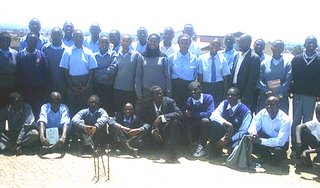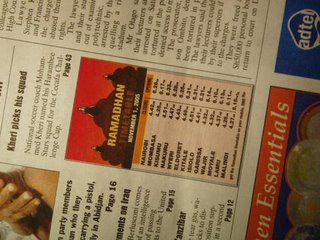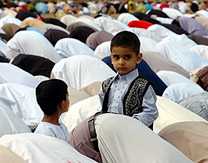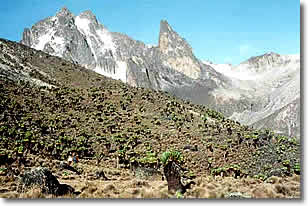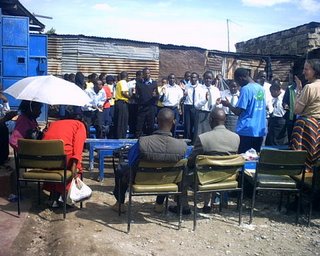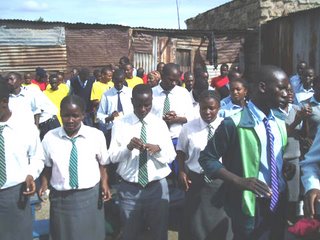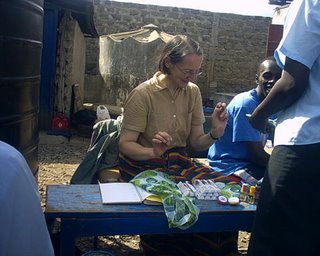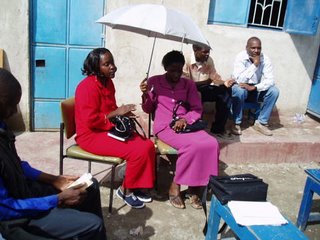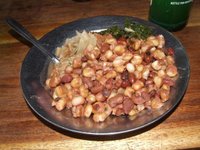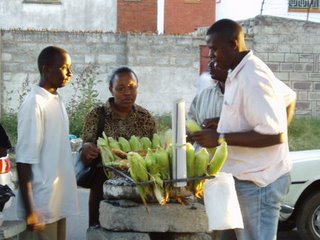:::::::::::::::::::::::::::::::::::::::::::::::::::::::::::::::::::::::::::::::::::::::::::::::::::::
Palm Sunday and Lent
***** Location: Worldwide in Christian communities
***** Season: Spring (Northern Hemisphere),
. . . . . . . . . . . long rains (East Africa)
***** Category: Observance
*****************************
Explanation
Palm Sunday is the remembrance of Christ’s entry into Jerusalem, and is celebrated by Christians worldwide on the Sunday before Easter. It is thus the last Sunday in Lent.
Palm Sunday is the joyful start of Holy Week, the week leading up to Christ’s passion and death on Good Friday. The joy of Palm Sunday quickly turns into betrayal, suffering and death. So, the celebration of Palm Sunday has a bitter-sweet flavour -- the same crowds who received Jesus so joyfully in Jerusalem that day, turned against him in violence within only a few hours.
Palm Sunday celebrations include the reading of the Gospel story, which recounts the entry into Jerusalem of Jesus Christ, riding on a donkey, and of the jubilant population, spreading palm fronds at his feet. In many European countries, there is a distribution to the congregation of palm crosses to take home -- these same palm crosses are burnt the following Ash Wednesday, to produce the ashes for the ashen crosses.
In Ethiopia, palm leaves are used to braid elaborate palm crosses for the faithful. In Kenya, Palm Sundays include processions with palm fronds, led by the church choirs, singing Palm Sunday hymns.

Palm Sunday procession at All Saints’ Cathedral, Nairobi, 1 April 2007
Text and photo : © Isabelle Prondzynski
:::::::::::::::::::::::::::::::::::::::::::::::::::::::::::::::::::::::::::::::::::::::::::::::::::::
The difficulty of procuring palms for that day's ceremonies in unfavorable climates for palms led to the substitution of boughs of yew, willow or other native trees. The Sunday was often designated by the names of these trees, as Yew Sunday or by the general term Branch Sunday.
This, and much more information about Palm Sunday, here :

http://en.wikipedia.org/wiki/Palm_Sunday
xxxxxxxxxxxxxxxxxxxxxxxxxxxxx
Jesus’ Triumphal Entry into Jerusalem
Matthew 21 : 1 - 11
When they had come near Jerusalem and had reached Bethphage, at the Mount of Olives, Jesus sent two disciples, saying to them, ‘Go into the village ahead of you, and immediately you will find a donkey tied, and a colt with her; untie them and bring them to me. If anyone says anything to you, just say this, “The Lord needs them.” And he will send them immediately.’ This took place to fulfil what had been spoken through the prophet, saying,
‘Tell the daughter of Zion,
Look, your king is coming to you,
humble, and mounted on a donkey,
and on a colt, the foal of a donkey.’
The disciples went and did as Jesus had directed them; they brought the donkey and the colt, and put their cloaks on them, and he sat on them. A very large crowd* spread their cloaks on the road, and others cut branches from the trees and spread them on the road. The crowds that went ahead of him and that followed were shouting,
‘Hosanna to the Son of David!
Blessed is the one who comes in the name of the Lord!
Hosanna in the highest heaven!’
When he entered Jerusalem, the whole city was in turmoil, asking, ‘Who is this?’ The crowds were saying, ‘This is the prophet Jesus from Nazareth in Galilee.’
http://bible.oremus.org/
xxxxxxxxxxxxxxxxxxxxxxxxxxxxx
Palm Sunday hymn
Ride on, ride on, in majesty!
Hark! all the tribes Hosanna cry;
O Saviour meek, pursue Thy road
With palms and scattered garments strowed.
Ride on, ride on, in majesty!
In lowly pomp ride on to die!
O Christ! Thy triumph now begin
O’er captive death and conquered sin.
Ride on, ride on, in majesty!
The wingèd squadrons of the sky
Look down with sad and wondering eyes
To see the approaching sacrifice.
Ride on, ride on, in majesty!
Thy last and fiercest strife is nigh;
The Father, on His sapphire throne,
Expects His own anointed Son.
Ride on, ride on, in majesty!
In lowly pomp ride on to die;
Bow Thy meek head to mortal pain,
Then take, O God, Thy power, and reign.
Words: Henry H. Milman, 1820
http://www.cyberhymnal.org/htm/r/i/rideride.htm
xxxxxxxxxxxxxxxxxxxxxxxxxxxxx

Palm Sunday procession at All Saints’ Cathedral, Nairobi, 1 April 2007
Photo © Isabelle Prondzynski
:::::::::::::::::::::::::::::::::::::::::::::::::::::::::::::::::::::::::::::::::::::::::::::::::::::
*****************************
Worldwide use
Palm Sunday - Palmsonntag
*****************************
Things found on the way
*****************************
HAIKU
boarding the bus
with a palm cross --
Palm Sunday
Palm Sunday --
prayers and birdsong
mix and blend
© Isabelle Prondzynski (1 April 2007)
:::::::::::::::::::::::::::::::::::::::::::::::::::::::::::::::::::::::::::::::::::::::::::::::::::::
Patrick Wafula on Palm Sunday 2011
A very unusual phenomenon has come up in Kayole on this Palm Sunday morning. I happened to walk across Soweto/Kayole this morning and was amazed by a totally new phenomenon: hawkers upon hawkers pushing wheelbarrows, carrying sackfuls or armfuls of fresh palm fronds for sale in the viscinity of or around the Church gates; the culmination of all these activities was Saba Saba Street in Kayole. One handful of fresh, blessed palm leaves, they said, was Kshs 10/-

Palm Sunday--
hawkers pushing wheelbarrow
full of palm leaves
Saba Saba street--
fresh palm leaves in hand, youth
stroll to church
on both sides, hawkers
selling fresh palm leaves--
Kanisani Gate
a lady-hawker
shouts twenty bob per handfull--
PCEA Church gate
This will enable us to know and understand why people in Nairobi are buying Palm leaves, from the Biblical point of vew's importance of palm leaves:
source : Palm Sunday / Wikipeida
:::::::::::::::::::::::::::::::::::::::::::::::::::::::::::::::::::::::::::::::::::::::::::::::::::::
church gate--
he sorts out palm leaves
from grass
busy Sunday--
hawkers selling
high grade palms
Soweto road--
he adorns his car
with palms
road junction--
bodabodas decorated
with palms
Brian Mulando, 2011
Bodaboda are bicycles which are used to transport people from place to place.
:::::::::::::::::::::::::::::::::::::::::::::::::::::::::::::::::::::::::::::::::::::::::::::::::::::
Today, Palm Sunday.
Then Good Friday five days hence.
Easter but a dream.
~ Lionel E. Deimel
http://deimel.org/poetry/church_year.htm
xxxxxxxxxxxxxxxxxxxxxxxxxxxxx
Palm Sunday
a scattering of hailstones
in the wheelbarrow
~ Paul Conneally (United Kingdom)
http://www.asahi.com/english/haiku/060424.html
:::::::::::::::::::::::::::::::::::::::::::::::::::::::::::::::::::::::::::::::::::::::::::::::::::::
. Lent / Palm Sunday / Easter 2011
two men lead
the crowd with a cross-
Kangundo road
~ yamame
Holy Thursday-
the priest wipes men's
dusty feet
~ Catherine Njeri Maina
flag post--
a picture of a shiny
Easter egg
~ Synaidah Kalahi
a priest walks
through the crowd--
Easter mass
~ Scholastica Mumbe
a dog dives for
the thrown goat skull--
Easter feast
~ Brian ETOLE
Easter feast--
delicious aroma of
roasted goat meat
~ BRIAN MULANDO
on the road--
he struggles with a cross
on his back
~ Jacklyne Anyoso
Palm Sunday--
she covers her head with
a palm leaf
~ Violet Wangira
Easter rush--
her new shoes squeak
as she runs
~ Elijah Juma
hosanna hosanna-
a young boy shouts as
he follows a multitude
~ Boniface Bonnke
:::::::::::::::::::::::::::::::::::::::::::::::::::::::::::::::::::::::::::::::::::::::::::::::::::::
Palm Sunday / Easter 2012
Palm Sunday -
an early sound of
the church bell
fresh palm fronds
hung at the entrance -
matatu ride
in the mirror-
a drunk man waves
a palm frond
Andrew Otinga
*****************************
Related words
***** Ash Wednesday
***** Lent
***** Easter
[ . BACK to WORLDKIGO . TOP . ]
:::::::::::::::::::::::::::::::::::::::::::::::::::::::::::::::::::::::::::::::::::::::::::::::::::::
